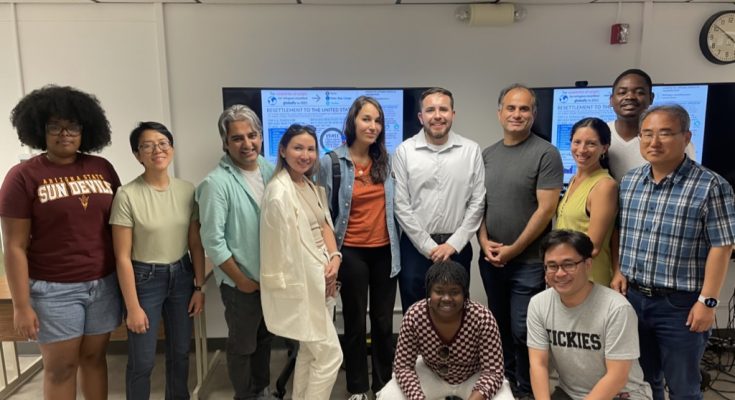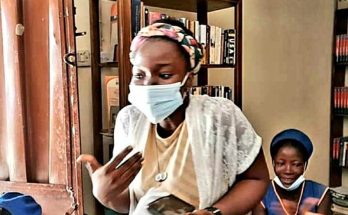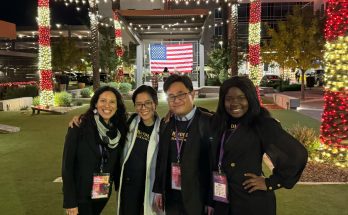One of the best aspects of Humphrey Fellowship is that you never stop learning, even if you are not in the classroom. In the first week of October, the cohort of 2023-24 fellows embarked on the Southern Arizona trip—all the way to the Nogales, Mexico border. The whirlwind trip had everything in the bucket for us—a journey through the mountainous, rugged yet aesthetically pleasing terrain of Southern Arizona, the historical and tourist monuments.
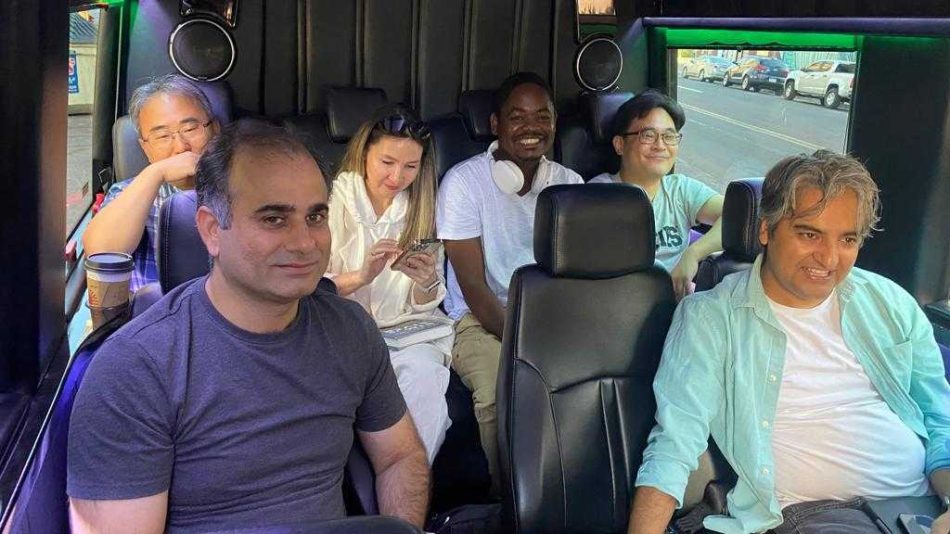
Our first stop was the San Xavier Mission in Tucson, perhaps the most historic one in the state which is reminiscent of the classic work of the Spanish Catholic mission of 18th century. The stunning white-walled building and hand-crafted entrance left us in awe.
After a quick lunch at El Charro, the oldest café in the South, our next stop was The University of Arizona. Fellows had mixed views about the food there. In nutshell it was an average food outlet with jaw dropping ancient ambiance.
Dr. Carlos Parra welcomed us at the university and he turned out to be a man of knowledge, wisdom and clarity of purpose. He talked about the US-Mexico border, the challenges for the people on the other side and those who wish to come to the US. Dr. Parra is a Presidential Postdoc Fellow at the University of Arizona. He talked at length about his research for an upcoming book manuscript, Televising Latinidad: Latino Los Angeles and the Rise of Spanish-Language TV in the United States, 1960-2010. He talked as to how this project will offer a critically important contribution to the study of ethnic/racial identity politics, community formation, and the media.
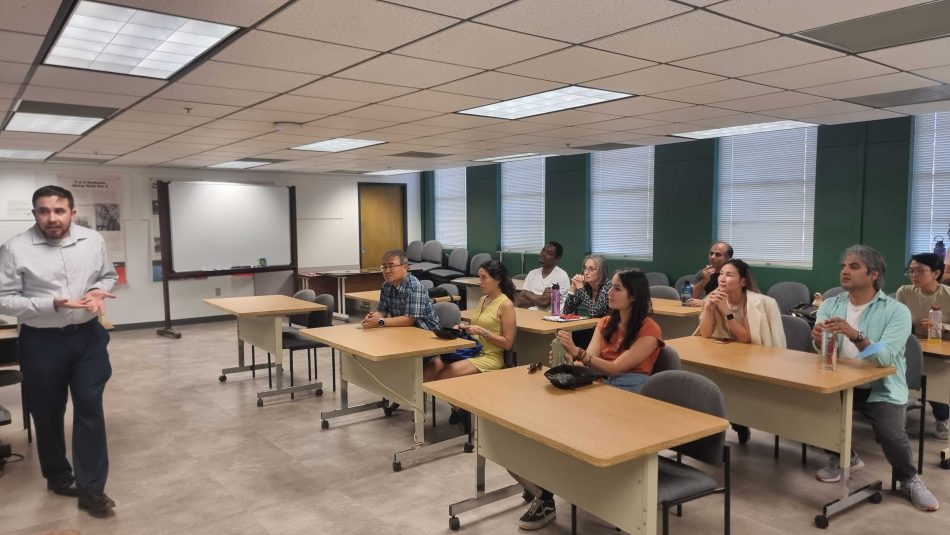
Then we checked into the hotel, pre-booked for the fellows. We were famished so went out straight for dinner to have Vietnamese food, grilled fish, and a little salad. One fellow still regrets why he ordered soup, because for him it was not what he looked forward to after a long day. Our verbal solace did not work and he silently retired to his bed.
Next morning we headed straight to Kartchner Caverns, one of the well-kept and remarkably-preserved caverns in the US. It was a no-camera tour but a jaw-dropping experience especially when the guides told the cohort how it was discovered and the way the promise of keeping it protected is being fulfilled.
Our next stop was once a mining town Bisbee. Surrounded by
striking topography, Bisbee is now a silent town which was
once the hub of mining in the U.S. The giant man-made ditch
was a treat to watch with the feelings of how man has been
destroying his surroundings for needs and money. It is 97
miles from Tucson.
The highlight of the evening was the
Bisbee mine tour. Fellows took a mini train that beelined us
inside the abandoned mine but now transformed into a tourist
spot. The temperature was almost 10 degrees down compared to
the outside where one of the visitors had to be ushered away
due to the cold temperature.
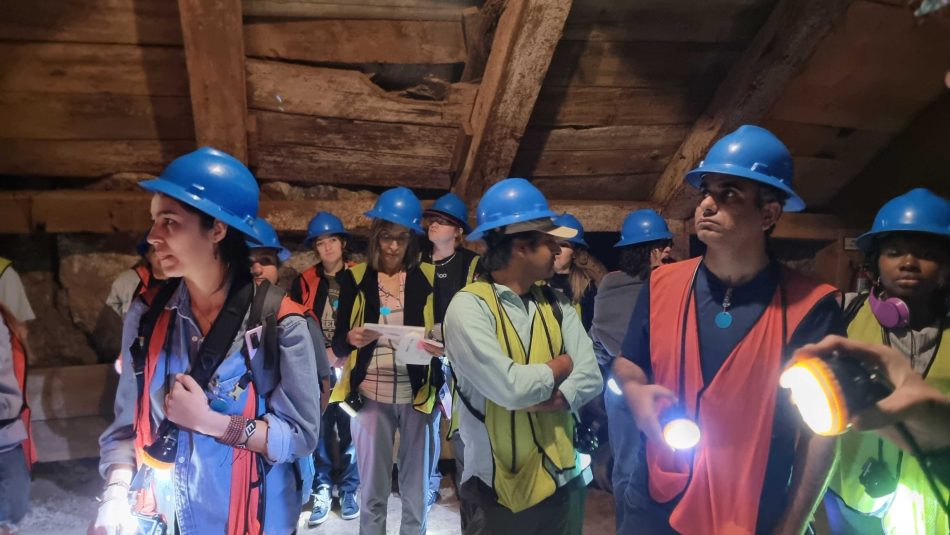
The guide shared the 100 years old brutalities of mining. How the children, mules and men used to work in inhuman and impossible conditions to extract copper, gold and other ores.
It was evening and we found a good place to eat as the city was going into slumber. The disappointed fellow from the previous night was elated to have food of his choice and announced proudly that it is better than that ‘soup’.
The last morning of the tour we had Joanna Williams at the hotel backyard. She is the executive director of Kino Border Initiative. She talked about systemic abuse at the US-Mexico border, the activities of the border patrol and the sufferings of people and their families coming to the US through legal and illegal means. She shared that about 99% of complaints of abuse, misuse of authority and power by security officials go unheard. She claimed that since several agencies look into these cases, there are either issues of willful negligence or they lack capacity to address those problems.
She surprised the cohort about that the percentage of those making entry to the US is 50% men and 50% women.
Then we checked out for our last destination of this tour—US-Mexico Bordertown, Nogales. Joe Wright, host/producer at the public access station and a columnist for the Nogales International, talked about his work covering the border, the misconceptions about the border, and the challenges and the charms. He showed the fellows his tiny yet well-organized studio which he uses to broadcast local news, views and issues.

Fellows then walked towards the border where the huge wall, barbed wire, tight security and monitoring system made us think of how man-made borders divide people of the same blood, caste, creed and ideologies.
Special thanks to Professors Julia Wallace and Fernanda Santos who shepherded us all the way with knowledge, guidance and anecdotes about the places we were visiting.

